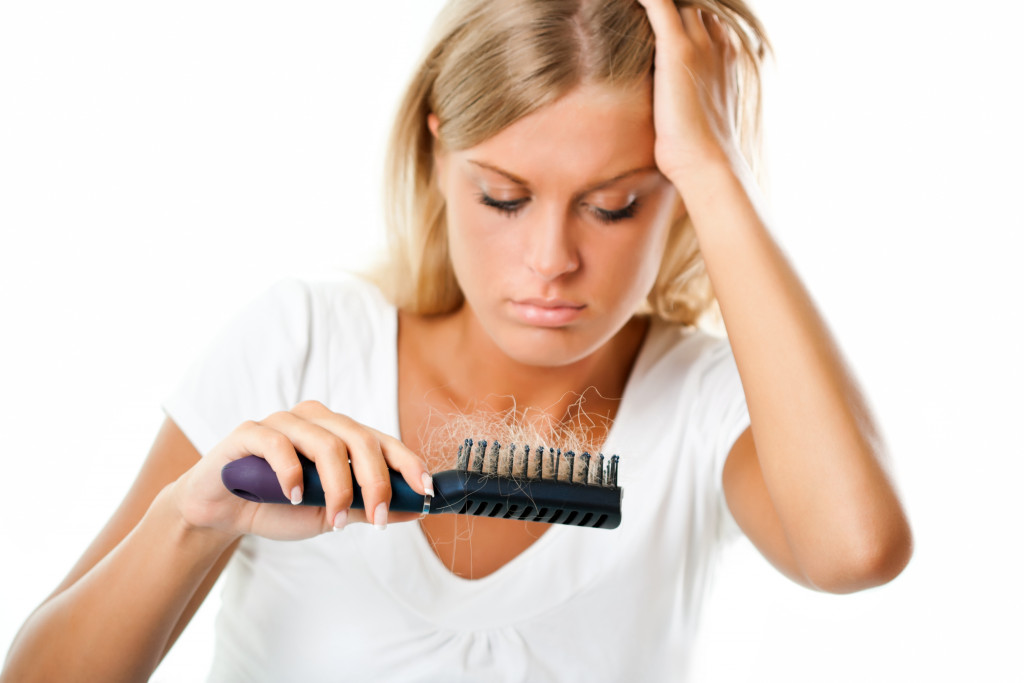Anyone can fall victim to hair loss—granted it is completely normal for humans to shed hair to make a place for new ones, some people experience excessive hair loss. The reason behind could be their genes, certain medical conditions, or hair styling.
No matter what reason is behind hair loss, women find it difficult to cope with. A woman losing more hair than normal may find it a hassle—especially when they originally have thick and long locks. The fallen hair clogs showers, spreads all over the floor, and even fall on food plates.
It can decrease a person’s self-esteem and confidence and could even cause stress. They will also feel more stressed when they see fallen hair all over the place. It can be grueling to deal with, especially if all measures have been taken to eliminate excessive hair fall.
Hair loss in women
The normal hair falls amount from 50 to 100 single strands falling per day. To women experiencing excessive hair loss, the number can go up to more than hundreds of strands falling per day. This alerting for people, there is a clump of hair in the shower drain that is visibly a lot compared to normal.
Some view hair loss as a natural process of the human body—because it is. However, losing more hair than normal is not. Excessive hair loss also comes with less hair growth, meaning the hair could grow thin, and that is where the appearance of bald spots increase.
What is this condition?
The medical term used for excessive hair loss in women and men is called “alopecia.” According to Mayo Clinic, alopecia areata is a medical condition causing hair loss in small patches—meaning the hair falls out in groups. The said patches become visible when strands line up and fall, creating a noticeable hairless trail.
Alopecia is the after-effect of the immune system attacking our hair follicles. The outcome is hair loss. This case is not special to women, and the hair loss brought about by alopecia does not only affect our heads. When one has alopecia, hair loss may occur in the following areas of the body: the scalp, eyebrows, eyelashes, face, legs, arms and other parts of the body.
The highly developed state of alopecia is called alopecia universalis, a condition where the hair is prevented from growing back. Unfortunately, in modern medicine, there is no known cure for alopecia. However, there are treatments that can promote hair growth and prevent hair loss in the future. The treatments include, topical medication, steroid injections, natural or organic hair products, oral treatments and even UV therapy.
How common is it for women to experience hair loss?

The popular notion is that hair loss only affects men. The fact of the matter is, it is estimated by Cleveland Clinic that more than half of when will go through visible hair loss in their life. The condition of hair loss in women that is significant is female-pattern hair loss or FPHL. The condition affects 30 million American women.
According to Health Line, FPHL is hereditary, and women become more susceptible to the condition after hitting menopause. This makes hormones responsible for the development of the condition.
FPHL causes the hair to slow down during its growth phase. This condition prevents hair from growing at the right speeds. If hair grows, they will be thinner and finer, making them prone to breakage.
FPHL is different from male-pattern baldness because the latter causes hair from the front of the head to the back until baldness. FPHL’s pattern starts at a woman’s hair part line and spreads all over their head.
Female groups most affected by hair loss
Any woman of any age and medical condition can suffer from hair loss. However, there are age groups and certain groups with special conditions that are more prone to experiencing hair loss. They include:
- Women aged over 40 years old
- Women who just gave birth
- Women who underwent chemotherapy and ones who have been taking medication that has hair loss as one of their side effects
- Women who style their hair in ways that need excessive pulling such as ponytails and braids
- Women who use chemicals on their hair for styling purposes.
There are conditions that affect women in different ways, but hair loss affects them more than men. To both genders, hair loss can be an effect of stress, an inherited condition, or a developed one. But for women, the loss is more acute: their confidence goes down, and they might feel they are less feminine due to hair loss.
There might not be a known cure for hair loss, but there are plenty of ways to reduce its effects and to avoid it. The best way to come close to treating hair loss is to consult a dermatologist once signs of hair loss start showing up.
